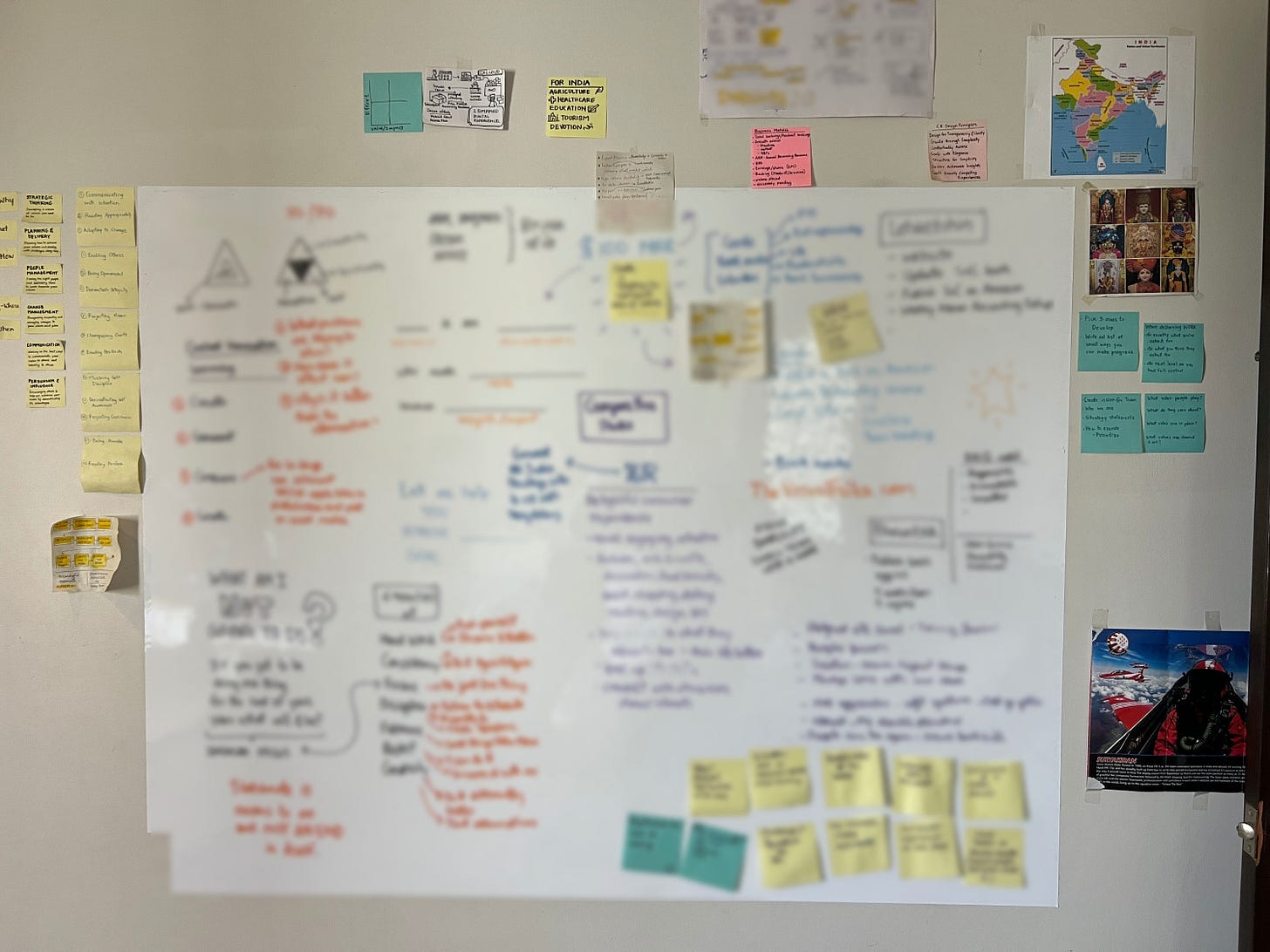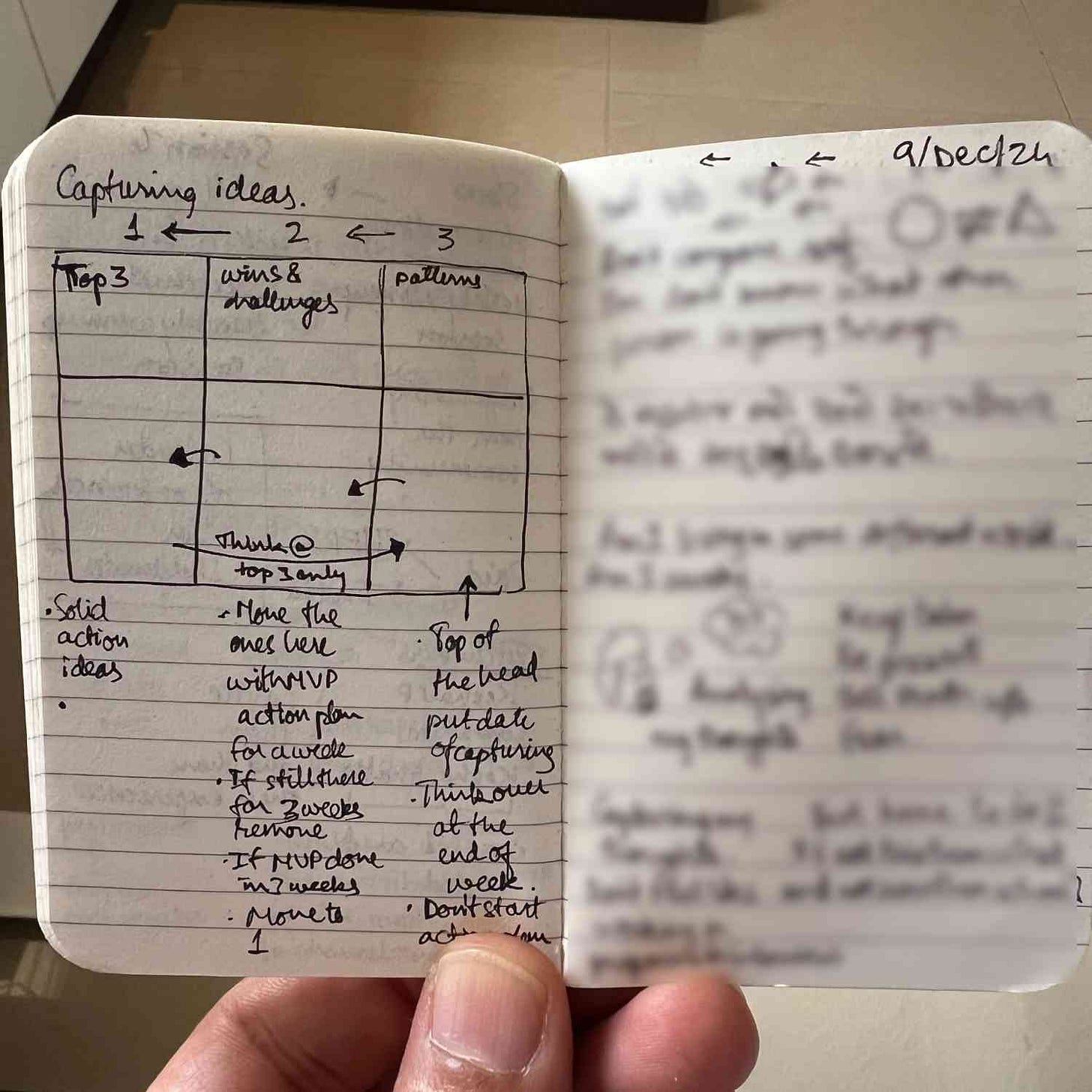We human are a THINKING MACHINE. Unlike other animals we are constantly overflown by THOUGHTS.
On and average we get 12,000 to 60,000 thoughts everyday.
How many of them help us evolve into our better self? 95% of them are repetitive and 70% of them are negative.
And then there are those which are like spark, evoke our emotions, bring smile and positive future. They are like signal from the universe. Call it intuition or calling.
Unless we make a note of them they disappear.
While sketchnotes are a great way of recording thoughts, I have used them mostly in dedicated time and setups. Like daily journaling, meetings, conferences, webinars, reading a book, etc. So there’s space and time allocated for the main activity and sketchnoting is done to record the highlights, summary, ideas, comments, and “thoughts”.
But what happens when we are on the go? Most of those 60,000 thoughts happen when we are walking, bathing, eating, relieving, sleeping, watching movies, and so on.
Recording thoughts via Note taking is the very first step to learn.
Recently I do created a tiny book that’s embedded in my wallet so it’s always with me. But it’s bit inconvenient. So I started looking out how some of the successful peopl working in complex world and whose decisions can have large scale impact take notes.
Before I jump in, do let me know how you take notes.
Writing an action down
makes that action more likely to happen.
Applying any kind of physical activity to an insight
strengthens the circuits holding the insight in place .
~=~ David Rock ~=~
My Note taking Experiments
It started with a post its. It always does for almost everybody I think. And then it moved to handy book. I will write on post its and stick it on the wall around or white board. And they will stay there till it looses it’s color. There was no process of converting them to something actionable.
When taking notes think of How will you use the notes? When will you use? Why are you using them?
Learning from stalwarts
How Sam Altman takes notes
In one of the earlier posts I shared my learning on how to capture notes on paper. While Cornell note taking is something I do regularly, I have been using it framework mostly in a dedicated time and space. The Capture-Create framework puts accountability on me, but I have been lazying around it.
When it comes to note taking on the go I think Sam has some good tips to follow.
How to organize thoughts
I find it really difficult to capture my thoughts when I am in the flow and book is not around me or I need larger canvas to capture.
I have setup a whiteboard in my room to capture thoughts as and when they come or when I am on call and moving around. The white board is also a store for my post it’s. But the notes are all randomly placed making it difficult to understand what I want to do with them. It lacks a system.
So while searching through a better on the go note taking mechanism I came across this video. It gives some good structure on how can I/We capture them with a clear distillation process.
Watching this video now I am thinking of integrating this method in my book too.
And last but not least here’s an amazing post on collection of notebooks of some of the creative people.
That’s all I have for today.
Happy Sketchnoting.
—Kumar
P.S. This article is completely written by a Human.






